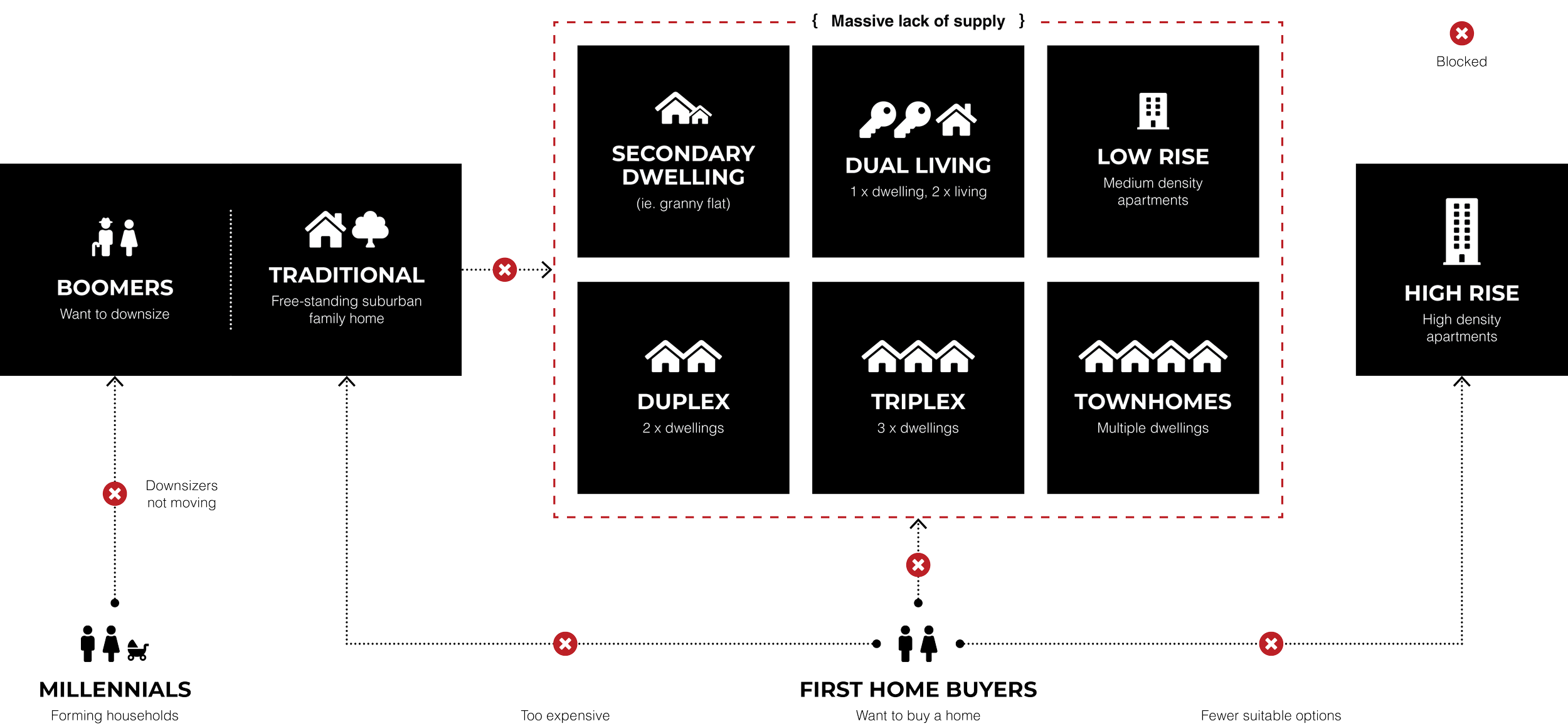Education around Property Types and stages of life
How it helps:
By the community and decision makers truly understanding the various property types, removing assumptions and stigma and recognising the needs of members of our community may assist in providing more of the right types of property for the region as well as unlocking properties that are currently underutilised. For example the homes that were previously occupied by singles or couples of retirement age being able to downsize into appropriate dwellings allows more movement in the market into enabling suitable housing for families and less pressure generally on the rental and housing market.
The challenges faced:
With a shift in population demographics and demand, we can see a disconnect between the housing on offer and the needs of the people living in and moving to the Sunshine Coast. With surging interstate migration to Queensland (particularly the SEQ region) and millennials having children and looking to upsize, it's not common for older Australians to sell so there is a blockage in the movement of people and property and a ‘missing middle’ is uncovered.
While house and land combinations have been the dominant housing type for Queensland for some time, we are seeing a desire for greater diversity of housing options and a more sustainable choice for the community is increased density of housing with more shared amenities. However, community and council push-back on such developments due to a lack of understanding limits the amount of dwellings able to be created and blocks the movement of the market from large homes to smaller dwellings.
What needs to be done:
Greater education around compatible housing for different stages of life.
Greater education around the benefits and mindset of retirement villages/independent living and the impacts on the community.
For example a couple who are over 65 can easily afford to purchase a large home that may not suit them in terms of cleaning and their care requirements and may eventually rely on high care, exacerbating the need for care and carers.
If they initially considered a retirement village/independent living arrangement instead, it may have been a much more suitable choice as it may have resulted in a greater lifestyle for the couple and alleviate the need for carers and less reliance on friends/family. This would have ‘freed’ up the large home for a family that needs it.
State and local government need to explore targeted Government & Taxation incentives offered to encourage people living in suitable homes.
Greater education on good development

